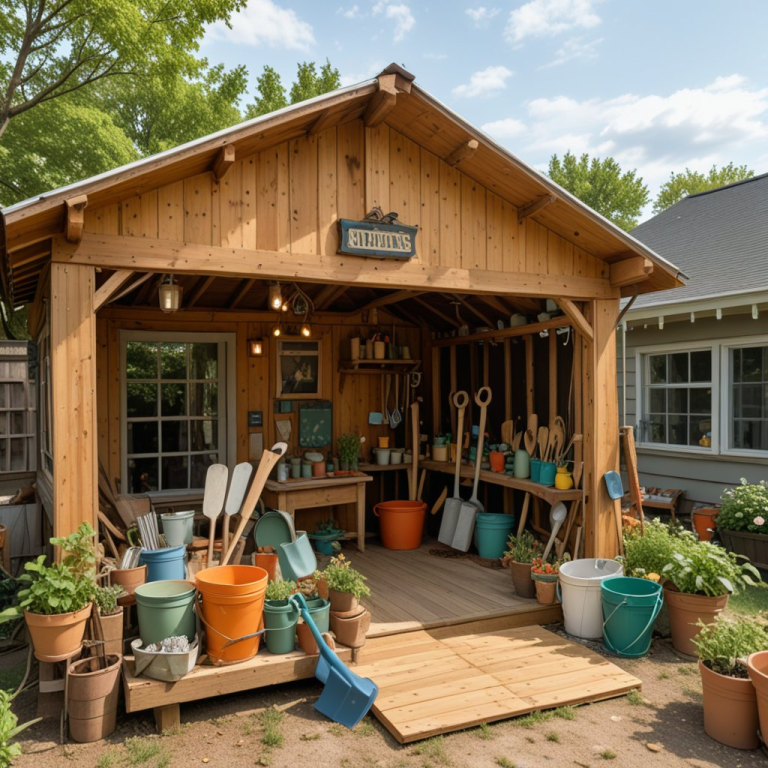Building a Raised Garden Bed: Essential Tools for Every Gardener

Creating a raised garden bed is one of the most rewarding ways to grow fresh vegetables, herbs, and flowers. Not only does it improve soil quality and drainage, but it also makes gardening more accessible and manageable. To ensure success, having the right tools is essential. In this guide, we’ll walk you through the process of building a raised garden bed and highlight the best gardening tools that make the task easier, more efficient, and enjoyable for gardeners of all skill levels.
The Benefits of Building a Raised Garden Bed
Raised garden beds offer numerous advantages over traditional in-ground gardening:
-
Improved Soil Quality: You can control the soil composition, ensuring optimal conditions for plants.
-
Better Drainage: Raised beds prevent waterlogging and promote healthier root growth.
-
Easier Maintenance: Less bending and kneeling reduces strain, making gardening more accessible.
-
Pest Control: Elevated beds can reduce the risk of pests and weeds.
By building a raised garden bed, you create a more organized and productive gardening space while making the process enjoyable and efficient.
Essential Steps for Building a Raised Garden Bed
Building a raised garden bed is simpler than it seems if you follow these steps:
1. Choose the Location
Pick a sunny spot with good drainage. Most vegetables and flowers thrive in full sun for at least six hours a day.
2. Select Materials
Common materials include cedar, redwood, or composite boards. Avoid treated wood that can leach chemicals into the soil.
3. Determine the Size
A standard raised bed is typically 4 feet by 8 feet, allowing easy access from all sides. Depth should be at least 12 inches for optimal root growth.
4. Assemble the Bed
-
Cut your wood to size.
-
Assemble the frame using screws or brackets.
-
Place the bed in the chosen location and level it.
5. Fill with Soil
Use a mix of topsoil, compost, and organic matter. This ensures your plants get the nutrients they need to thrive.
Best Gardening Tools for Raised Beds
Having the right tools makes building and maintaining your raised garden bed easier:
-
Garden Trowel: Ideal for planting seeds and seedlings.
-
Garden Fork: Perfect for loosening soil and aerating.
-
Pruning Shears: Helps trim and maintain plants.
-
Garden Gloves: Protect your hands while working.
-
Wheelbarrow: Useful for moving soil, compost, or mulch.
-
Watering Can or Hose: Ensures proper hydration for your plants.
Using high-quality tools not only saves time but also enhances your gardening experience.
Tips for Maintaining a Raised Garden Bed
-
Regular Watering: Keep soil consistently moist but not waterlogged.
-
Mulching: Reduce weeds and retain soil moisture with mulch.
-
Crop Rotation: Avoid planting the same crops in the same soil each year to maintain soil fertility.
-
Pest Management: Inspect plants regularly for pests and remove them promptly.
With proper care, your raised garden bed can produce abundant, healthy crops season after season.
Final Thoughts
Building a raised garden bed is an excellent way to improve your gardening setup and ensure healthier, more productive plants. Equipping yourself with the best gardening tools makes the process smoother, safer, and more enjoyable. Whether you are a beginner or an experienced gardener, a raised bed can transform your outdoor space into a thriving garden oasis.
FAQs
Q1: What is the ideal size for a raised garden bed?
A: Most raised garden beds are 4 feet by 8 feet, allowing easy access from all sides. Depth should be at least 12 inches for optimal root growth.
Q2: What type of soil is best for a raised garden bed?
A: A mixture of topsoil, compost, and organic matter provides the ideal nutrients and drainage for most plants.
Q3: Can I use treated wood for building a raised bed?
A: It's best to avoid treated wood, as chemicals may leach into the soil. Cedar or redwood is a safer option.
Q4: How often should I water a raised garden bed?
A: Water regularly to keep the soil moist, especially during dry spells, but avoid waterlogging the plants.
Q5: What are the must-have tools for raised garden beds?
A: Essential tools include a garden trowel, garden fork, pruning shears, gloves, wheelbarrow, and a watering system.






